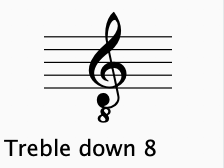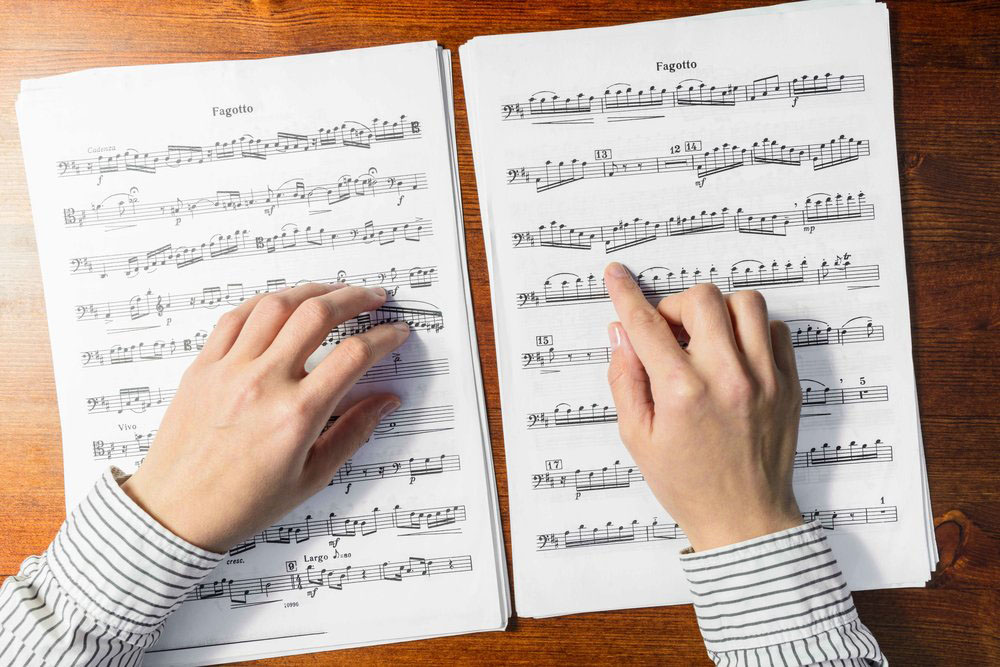2 Min Read
Top Vocal Notation Mistakes
When you create music for any musician, it needs to be as readable and fool-proof as possible. You might not always be there when someone is reading the music that you wrote, and you won’t always be able to correct people if they misunderstand your writing. For these reasons, it is crucial to understand these top notation mistakes in vocal parts.
Vocalists have to sight-read both music and lyrics at the same time. Sometimes, multitasking while sight-reading can be tricky, especially if the music is not well written. While there are many common lyrical mistakes, let’s start first with common musical errors.
Musical

- Wrong octave
If you’re ever confused about which range a vocalist can sing, ask them.If you aren’t sure where on the staff to place the vocal melody you are writing, remember that voice is not a transposing instrument, and you can simply use the piano to find the correct sounding octave. There are many instances when a variety of clefs are used, including transposing clefs. For example, this “treble 8vb-down” clef shows music written an octave higher than it sounds. You’ll often find lead sheets sung by male singers or tenor parts in a choral setting using this clef.
- Wrong clef
Once you’ve established that you are writing in the correct octave, make sure that the clef you’re using is the most appropriate clef for that music. Avoid using excessive ledger lines if an easier clef is possible. However, stay away from choosing any random clef in Sibelius; there are a lot of clef options in notation software, and many musicians will never use most of them. Stick to the common clefs that you’re sure the singers will be able to sight read.

- Wrong key and range
Don’t assume that all vocalists can sing in every range. One common mistake is for band leaders to give lead sheets of songs sung by male vocalists to females, and vice versa. While the singer might be able to reach those notes, the singer will not sound their best unless the music is in a key appropriate for their range. If you are organising any number of vocalists, make sure that you are writing in an appropriate range for their voices. If you aren’t sure, ask. Remember that as we age, our range changes drastically. A piece written for an operatic tenor will not be in an appropriate range (or skill level) for a 10-year-old boy. If you take the range and key into account when writing for vocalists, your vocalists will appreciate you for helping them sound their best and keeping their voices healthy.
- Not providing the melody
This mistake is more common in pop and jazz settings; make sure you provide your vocalist with a melody. Very often, band leaders will bring a chord chart to a rehearsal and direct the singer to listen to the song and learn it by ear. While learning by ear is a great skill, it is disrespectful to waste the singer’s time in this way. What are they supposed to do at your rehearsal if they’ve never heard the song and they are finding out that they won’t be receiving music? Don’t waste their time; spend the time it takes and transcribe the melody for them. A very common mistake made by band leaders is assuming that vocalists do not read music well. Many vocalists are incredible sight readers, and if they aren’t, they will appreciate the respect you are showing them by giving them a chart just like everyone else in the band.
- Only providing the melody
Avoid providing your vocalist with a chart that has only the melody. If the rest of the band has music with chord changes, form markings, rehearsal letters, etc., make sure to provide that information to the vocalist as well. All musicians, including vocalists, need as much information as possible to properly learn, analyse, and improve the piece while they prepare to perform. Make sure to also provide lyrics, when applicable. No singer wants to be sight reading a melody with no changes, while simultaneously trying to line-up the lyrics they just Googled on their phone.
- Excessively complex writing
While it’s important to respect that vocalists are strong musicians and have reading abilities, it’s equally important to understand the limitations of the human voice. In order to sight read, vocalists need to have impeccable ears, strong relative pitch, and constant focus to multi-task between reading complex lines and pronouncing new foreign languages in a way that is both correct and conducive to the best technique. In short, vocalists have a lot going on. Make sure that you aren’t writing lines for them that are physically impossible or excessively complex. This is not to say that vocalists can’t sing difficult passages, just try to avoid fast two-octave leaps or insanely fast 32nd note chromatic runs.
- Not considering breath needs
Vocalists need to breathe! Just like for horn and wind players, it’s essential to consider the needs of breath when writing for vocalists. Avoid extremely long notes and challenging passages that are not followed by a short rest for the vocalist to catch their breath.
Lyrical
If your music is appropriate for the voice, it’s time to make sure that you’re writing in your lyrics correctly! Some of the elements we are going to unpack might not seem that essential, but if you were to read a piece of music without them, you would find yourself making mistakes and being a little bit confused. Very important: if you are using notation software, be sure to use the lyric function of that program rather than a basic text box function.
- Slurs
Slurring vocal parts is crucial in helping vocalists visually and automatically understand the phrasing of a passage. We only have one rule:
Add slurs when two or more notes share the same syllable. Start the slur when the syllable is first vocalised and end the slur once that syllable ends.


- Hyphens
Hyphens (-) are crucial when you have to split up a word with more than two syllables. For example, if I was going to write the phrase “All I ever think about is you”, and each syllable had a different note, the lyric would contain hyphens in between syllables, looking like “All I ev-er think a-bout is you”



- Bad splits
When you’re splitting your words into multiple syllables, you can sometimes use common sense. Some splits will look really strange and unnatural.
For example, let’s split the words in the phrase “We’re gonna go swimming in October in Alabama”
Natural: We’re gon-na go swim-ming in Oc-to-ber in Al-a-bam-a.
Unnatural: We’re go-nna go swi-mming in O-ctob-er in A-la-ba-ma.
The more natural your splits, the more easily your vocalist will be able to read and pronounce the lyrics.
If you aren’t sure where to split your multi-syllable words, there is an extremely handy (free) tool online that will split your words for you in the most appropriate place. It works only for English texts. Try The Lyric Hyphenator!
- No punctuation
Make sure you add all of the punctuation you would normally add when writing! If your singer is singing a question, but there is no question mark, how will they know to sing with the appropriate inflections? Add full stops, exclamation points, and everything else that you would normally include in when writing. Punctuation helps the vocalist properly phrase and communicate the text.





